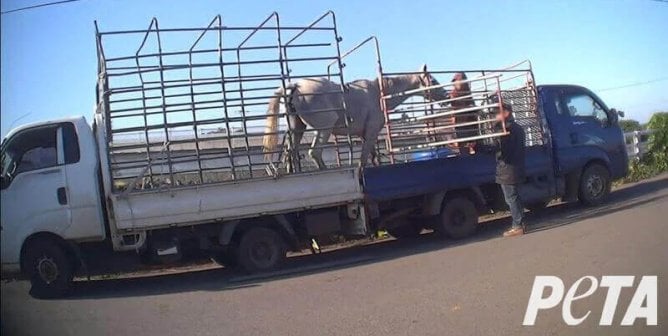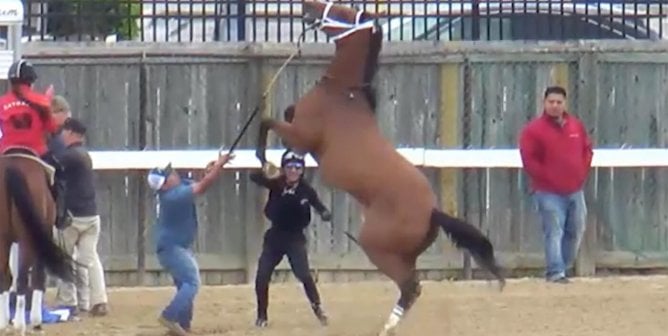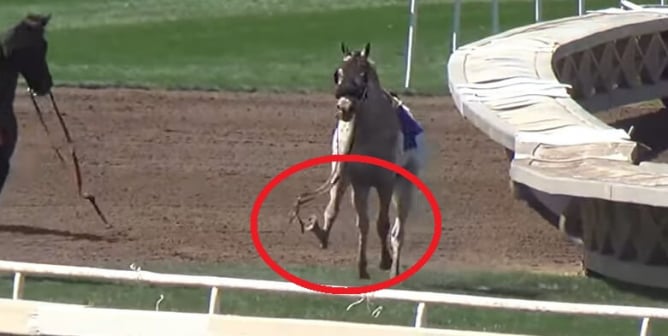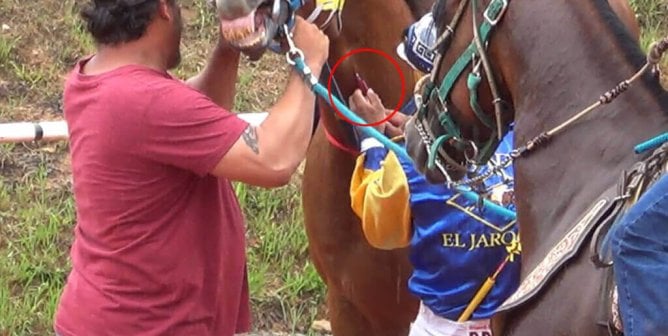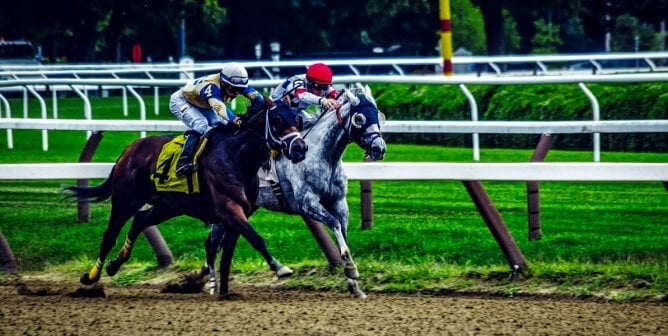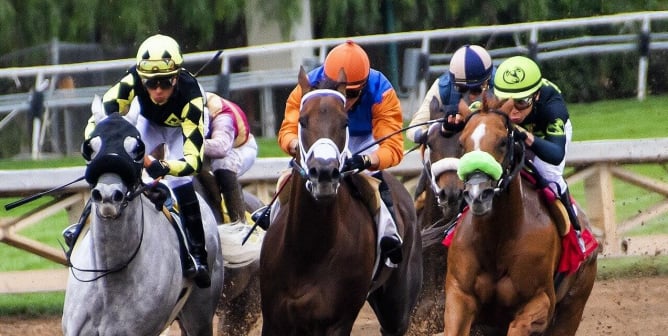Injuries and Breakdowns
Millions of Americans watched as Barbaro and Eight Belles broke down in Triple Crown races, but thousands of other racehorses die out of the spotlight. Every week, an average of 24 horses experience fatal breakdowns at racetracks across the country, and this number continues to rise. Between 2009 and 2011, roughly 3,600 horses died during racing—635 in California alone.
These statistics don’t even include the number of horses killed before they make it to the races. In 2011, PETA went undercover at auctions for Thoroughbreds called “under-tack” shows, in which young horses are forced to perform in reckless speed trials—dubbed “suicide shows” by one jockey—to impress prospective buyers. PETA documented how pushing these young, undeveloped horses to run at extreme speeds results in fatal breakdowns and life-threatening injuries.
Pushing these immature 2 year old horses for speed before they have reached physical and mental maturity is recklessly dangerous and systematically damaging for the animal while also proving to be unreliable for the prospective buyers as a predictor of future racing ability.
—Dr. Sheila Lyons
At a 2011 Fasig-Tipton auction, a filly sustained a compound fracture in her leg while sprinting. In the video, pieces of bone can be seen splintering from the filly’s leg as subsequent strides put weight on the exposed bone. And at a 2011 Ocala Breeders’ Sales Company auction, a colt died when his aorta burst after he was forced to sprint in 90-degree temperatures.
At PETA’s urging, the Ocala Breeders’ Sales Company eliminated timed sprints from its January 2012 sale and altered its summer sale schedule to protect horses from extreme temperatures—but horses used for racing continue to sustain injuries and experience catastrophic breakdowns.
Experts agree that the widespread use of non-therapeutic drugs—both legal and illegal—is another leading contributor to injuries and fatal breakdowns on racetracks. Pushed beyond their limits, most horses are subjected to cocktails of drugs that are intended to mask injuries and artificially enhance performance, often enabling them to race with injuries that would otherwise be too painful to run on. California researchers found that a shocking 90 percent of horses who break down have pre-existing injuries.
PETA’s investigation of trainer Steve Asmussen revealed that nearly every horse was given a variety of drugs and that horses were forced to race and train while injured. Nehro, runner up in the 2011 Kentucky Derby, was racing and training with a chronically painful hoof condition and while his hooves had holes in them—one was temporarily held together with superglue. Another Asmussen-trained horse, Valediction, whose knee had been repeatedly injected with corticosteroids, fractured a bone during a race and had to have emergency surgery. PETA purchased Valediction, and the equine veterinarian who examined him recommended that he never be ridden again—even by a child and even though he was only 5 years old—because the arthritis in his knees was so severe. He is now retired on a farm.
The rate of injuries and breakdowns continues to rise as the use of injury-masking medication, poor breeding techniques, and dangerous training methods becomes more prevalent. Please join us in asking the four major Thoroughbred auction companies to reform their under-tack sales to help prevent more young horses from experiencing terrible deaths, and learn more about the widespread use of drugs in the horse-racing industry here.
